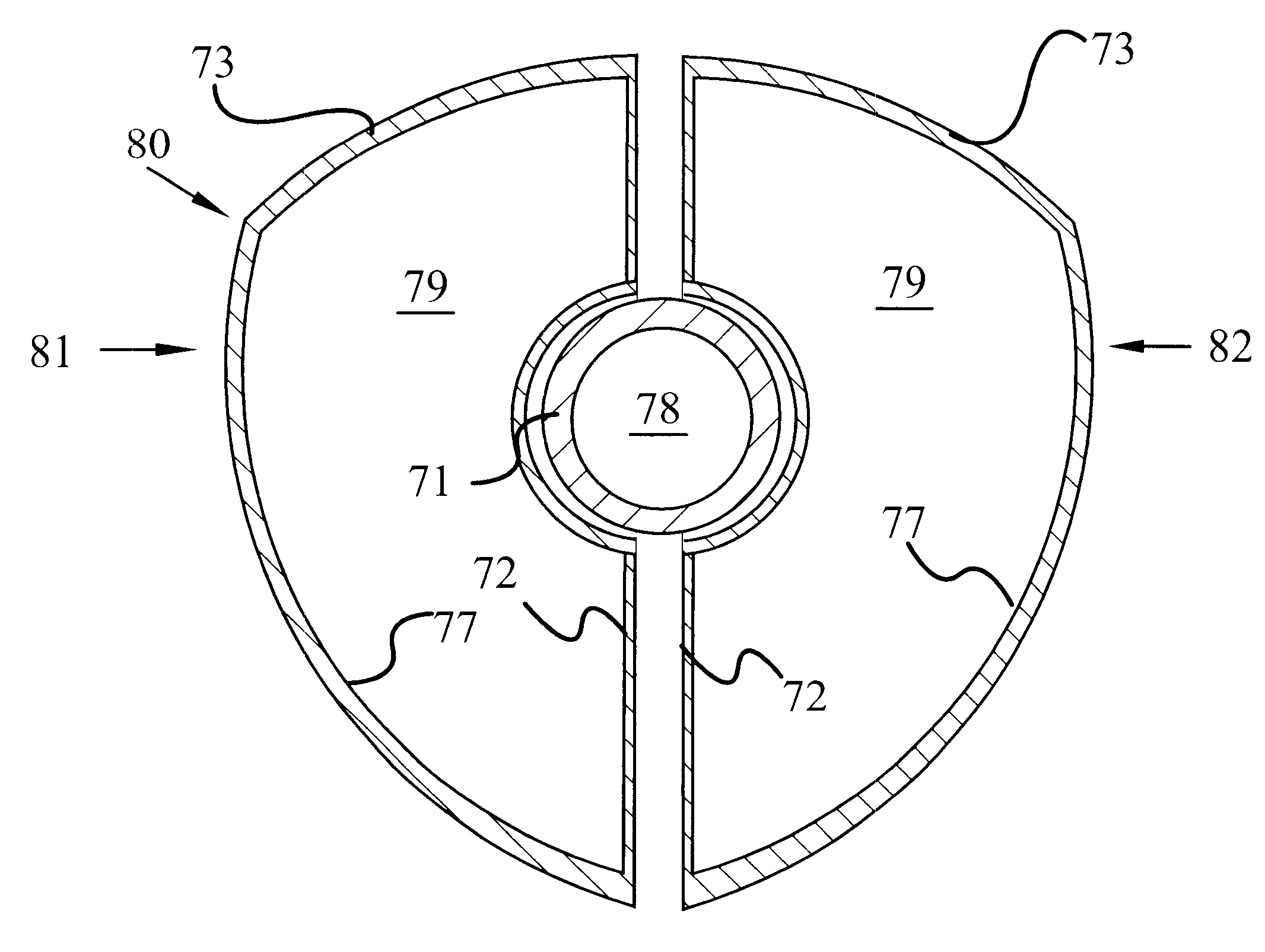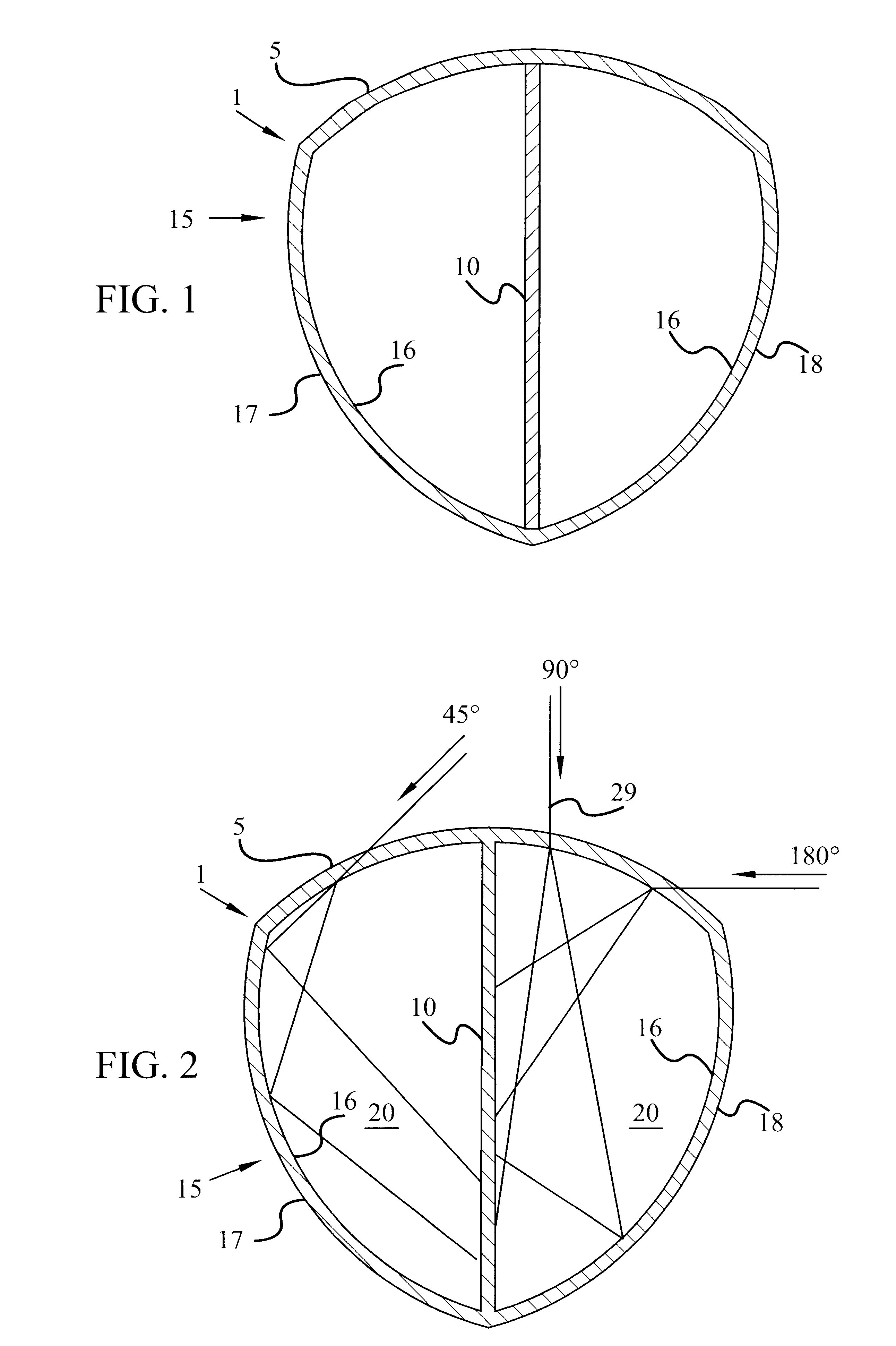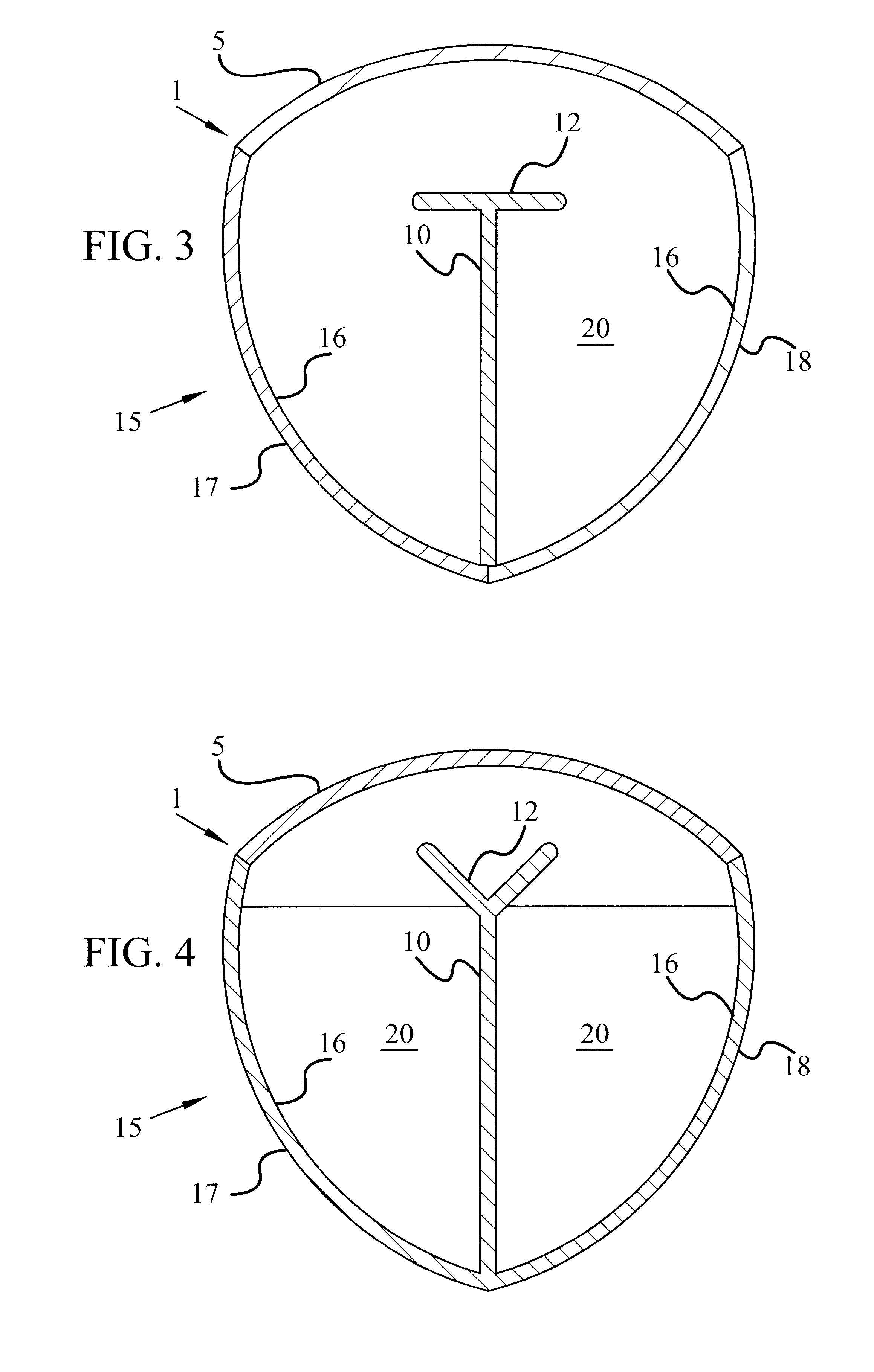Solar collector pipe
a solar collector and collector pipe technology, applied in the field of solar energy collection, can solve the problems of inefficient energy collection of conventional solar water heating systems, inconvenient maintenance and repair, and inefficient solar energy collection and transfer. achieve the effects of convenient manufacture and assembly, high efficiency, and convenient maintenance and repair
- Summary
- Abstract
- Description
- Claims
- Application Information
AI Technical Summary
Benefits of technology
Problems solved by technology
Method used
Image
Examples
Embodiment Construction
Although the present invention may be readily adapted to a variety of embodiments of a solar collector pipe, with reference to FIGS. 1-4, solar collector pipe 1 is an example of a solar collector pipe of the invention. It will be understood by one of ordinary skill in the art that the invention is not limited to the specific structures illustrated in the drawings.
Solar collector pipe 1 directly conveys internal fluid 20 to be heated and collects and transfers solar energy efficiently and directly to fluid 20, thereby maximizing both the amount of energy transmitted to fluid 20 and the peak temperature attainable by fluid 20. Solar collector pipe 1 includes transparent portion 5 for admitting solar energy into solar collector pipe 1. Absorbing portion 10 for absorbing solar energy is internal to solar collector pipe 1. Conduit portion 15 is also included and comprises reflecting surface 16 thereon for reflecting solar energy received through transparent portion 5 onto absorbing porti...
PUM
 Login to View More
Login to View More Abstract
Description
Claims
Application Information
 Login to View More
Login to View More - R&D
- Intellectual Property
- Life Sciences
- Materials
- Tech Scout
- Unparalleled Data Quality
- Higher Quality Content
- 60% Fewer Hallucinations
Browse by: Latest US Patents, China's latest patents, Technical Efficacy Thesaurus, Application Domain, Technology Topic, Popular Technical Reports.
© 2025 PatSnap. All rights reserved.Legal|Privacy policy|Modern Slavery Act Transparency Statement|Sitemap|About US| Contact US: help@patsnap.com



